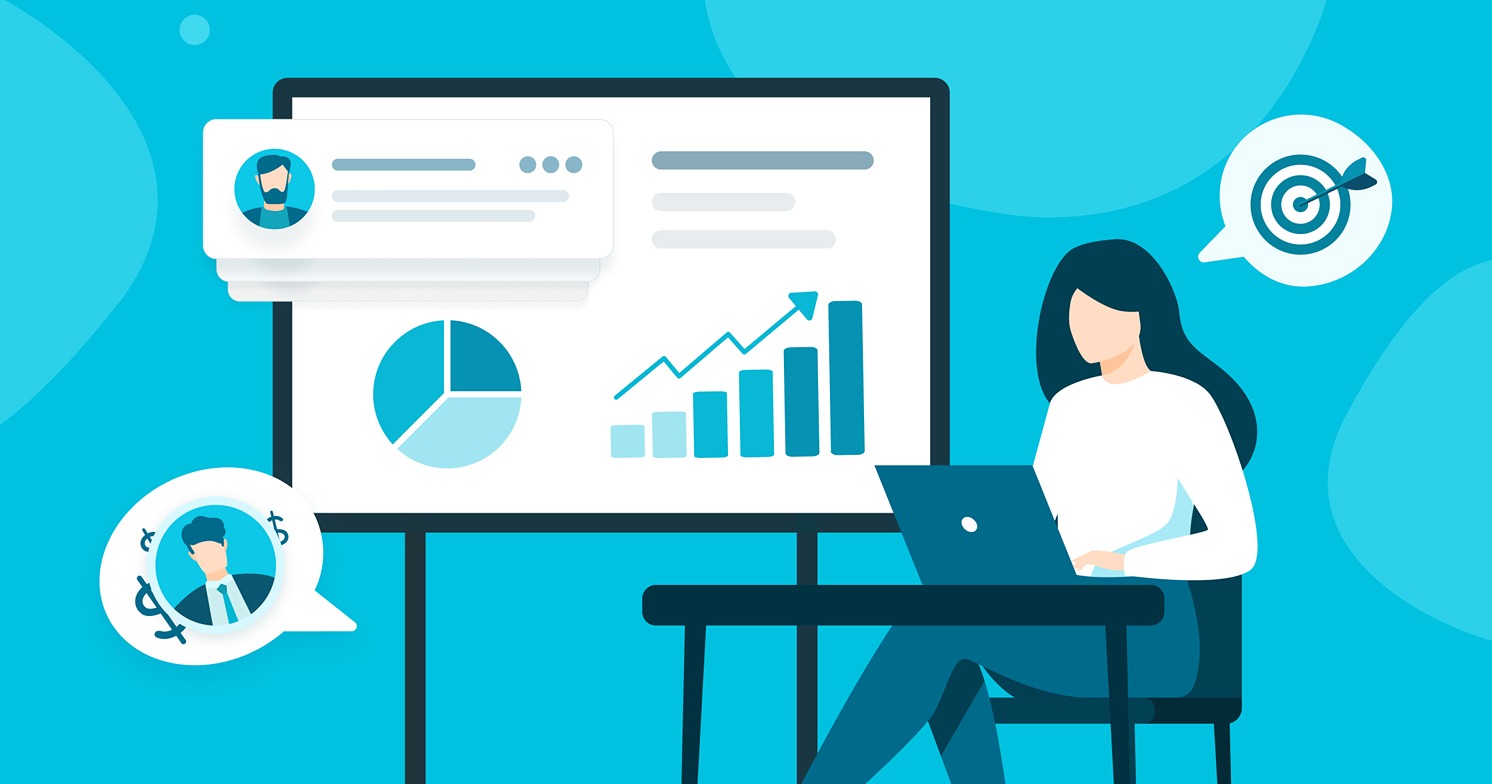Not every sales funnel is created equal. If properly planned and executed, a single sales funnel can produce well over $100K per month (trust us: we’ve seen it). But without the right approach, your sales funnel will fail to deliver and leave your business starved for revenue. That’s where this guide comes in.
We’ve rounded up the essential tips for creating a solid, well-performing sales funnel that will net you more leads and sales. We’ll be guiding you through some important questions, like:
- What is a sales funnel?
- Why do you need a sales funnel?
- What are the stages of a sales funnel?
- How do you create a sales funnel?
- How are sales funnels measured?
We’ve also included our favorite templates and tools to help you, plus some real-world examples of powerful sales funnels you can turn to for ideas.
Ready to get started? Continue reading or jump to a specific topic below:
What is a Sales Funnel?
A sales funnel refers to the multi-step process potential customers go through to become buyers. Broken into various sales funnel stages, it reflects the customer’s journey, from the initial awareness of a product or service to the actual purchase.
The sales cycle length (and the number of stages) generally depends on your industry, but the purpose is the same: to chart the transformation of leads into buyers.
Why Do You Need a Sales Funnel?
In today’s digital world, users are spoiled because they have many choices. So unless you already dominate your market, you’ll need some way to show users your value. Why should they choose you?
A well-crafted sales funnel is the perfect opportunity to prove your worth. You get to provide loads of value before the user has even tried your product. They have the chance to get to know you—the humans behind the product. And that builds trust, which leads to purchases and helps to scale sales.
Email marketing is powerful; it makes up the bulk of your funnel. According to a study by Smart Insights, 81% of business owners and marketers report a positive ROI from email marketing.
48% report good returns.
There are countless online studies on email marketing. And the vast majority report positive returns.
Some businesses are even solely built around email marketing. So you’re losing money if you don’t have a sales funnel.
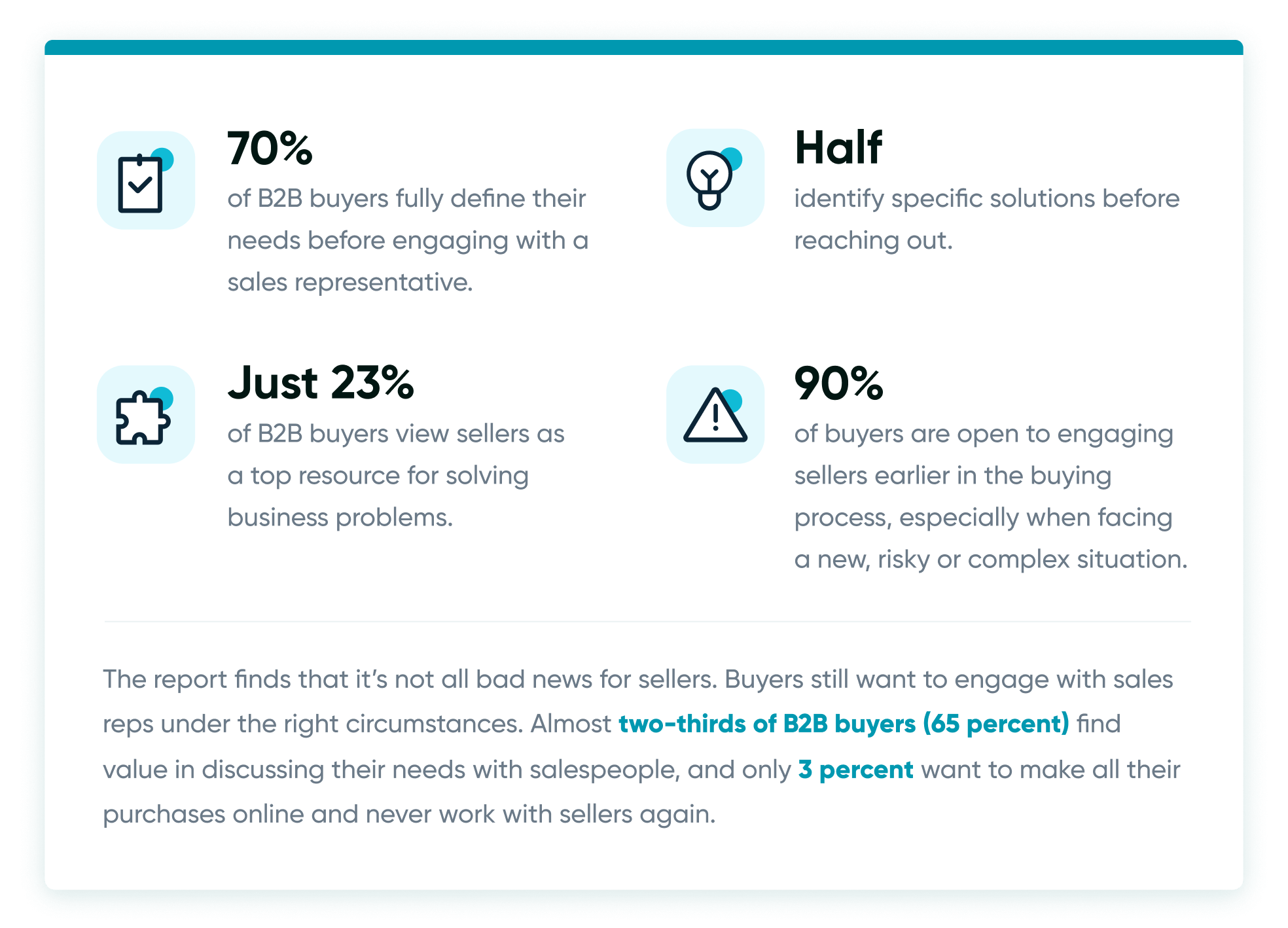
What Are the Stages of a Sales Funnel?
Several sales funnel stages go from the top to the bottom of the funnel. Longer sales funnels also have a “mid-funnel” stage.
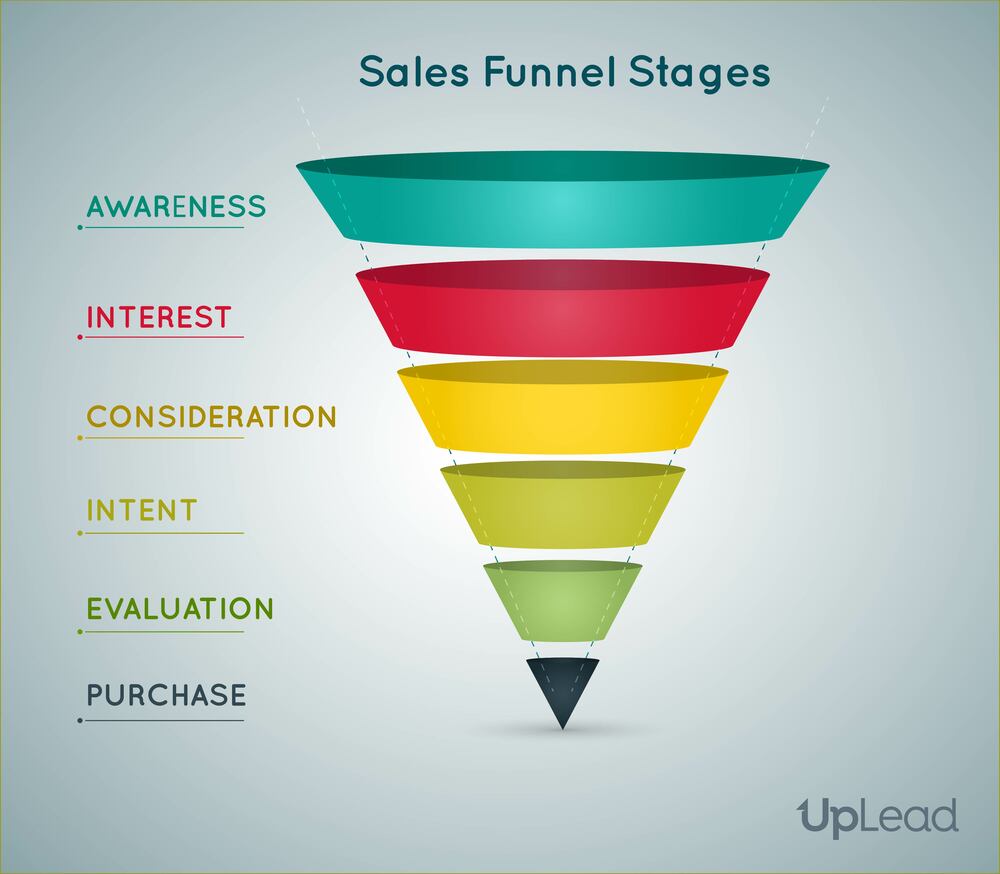
The number of sales funnels stages depends on your service. But we’ll cover that in the next section.
For now, let’s look at the stages of a typical sales funnel and the purpose of each stage.
Sales Funnel Stage #1: Awareness of Product or Service
At this funnel stage, your user reads about you for the first time. It could be through an ad, a blog post, a cold email you’ve sent out, etc. If you conducted your keyword research the right way, you should be able to capture many leads early on by creating targeted content for buyers in the “awareness” stage.
However they hear about you, they’ve now aware that you exist. Ideally, they’ll transition to the next step.
Sales Funnel Stage #2: Interest in Product or Service
Whether they’re reading an ad or an email, the content must draw them in. Get them interested.
If you go the lead magnet route, you’ll want them to sign up for whatever it is you’re giving away for free. For example, it could be an exclusive report, an ebook, a webinar, or even an attractive landing page.
But to have a user sign up for your lead magnet is a clear show of interest. And then it’s time to nurture that interest.
Sales Funnel Stage #3: Consideration of Product or Service
After consuming a valuable piece of info like your lead magnet, a prospect should already be heading toward the consideration stage of the sales funnel. But, to help things along, we have the nurture campaign.
It’s a series of emails designed to ease the user into consideration and push them towards intent. A typical nurture sequence contains between 5 and 20 emails. Remember that you can personalize cold emails at scale using automated outbound email tools.
This stage of the sales funnel is the perfect chance for your sales reps to expand upon the value in the lead magnet and give your leads a little bit more before they reach the home stretch.
Sales Funnel Stage #4: Evaluation of Product or Service
Now that the prospect is considering your product or service, we can give them that final push to where they’ll make a purchase. We need to get them into the evaluation stage of the sales funnel, where they’ll be working out what benefits await them should they sign up.
A sales sequence is what closes off the sales funnel. This is a short series of emails restating the benefits that have been peppered throughout the communications.
A typical sequence at this stage will contain between 2 and 10 emails. And if successful, it will close the deal and lead the customer to a purchase.
Sales Funnel Stage #5: Purchase of Product or Service
They buy your product. But it doesn’t end here.
If they reach this stage and don’t buy, there’s the option of adding a down-sell sequence at the bottom of the funnel. This will sell them on a cheaper service or product if available.
Or, if they make a purchase, an Upsell sequence could end the funnel for you. This sequence won’t hit them immediately but only after they’ve gotten comfortable with your product or service.
Once they start to realize the true value of your product or service, they’re more likely to buy again and start with the sales process all over.
Lead generation doesn’t have to be all that painful. With UpLead, you can easily connect with high-quality prospects and leads to grow your company.
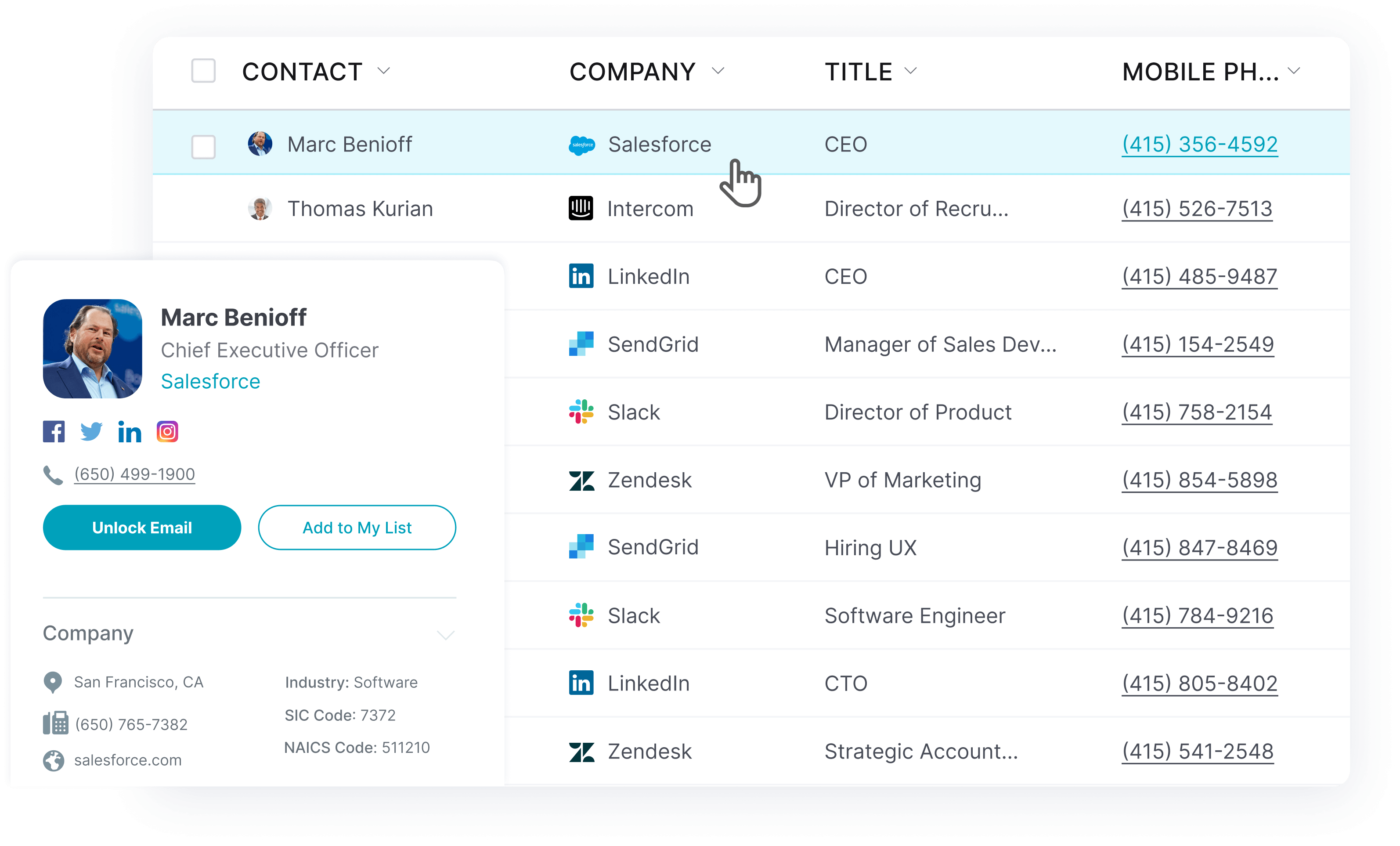
How Do You Create a Sales Funnel?
Creating your own sales funnel stages can seem like a daunting task. Here’s a simple checklist for sales funnel stages so you can build and improve your sales process and reach your target audience:
1. Start with a Lead Magnet
You’ll need a good offer to kickstart your sales funnel stages. So the first step is figuring out what to offer your target audience and creating it.
It’s important that your lead magnet doesn’t consist of information readily available on the internet. If it’s a struggle to find all the information and put it together, that’s fine. But if they could get the information in your lead magnet through a simple Google search, it won’t be very valuable to them.
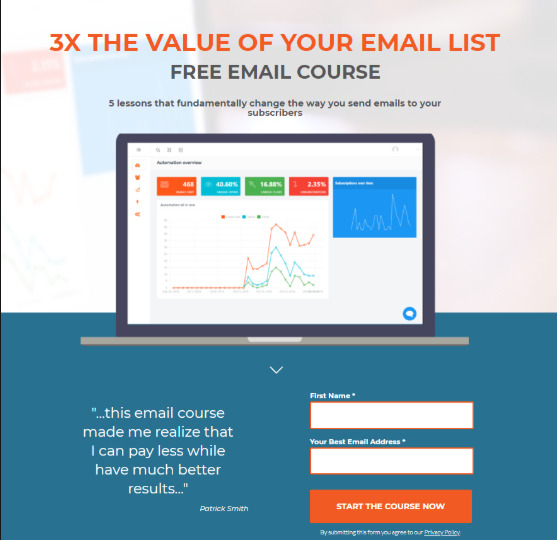
This mistake would destroy the relationship before it even starts. Their opinion of you would be set, and they’ll likely unsubscribe from your list at the first opportunity.
The lead magnet must provide deep insight or real value to be effective. Ideally, the user can hardly believe it is free, and it motivates them to become paying customers.
There are a few different kinds of lead magnets. A landing page with a free trial or initial call is the most common. But here are a few (better) ideas:
- An ebook (can be sold on Amazon as well, to give the impression of even greater value)
- A detailed report on something truly important to the user
- A video course to learn a new skill
- A free subscription to a valuable in-house magazine of some sort. (Ideally, it’s a physical magazine.)
- A webinar, where the user could learn a new skill or tactic
And so the list goes on. Your imagination only limits you. Once you’ve created a lead magnet, there’s no need to stick to it for life. You can always change it later. So don’t procrastinate during this step; your sales funnel stages will never be finished. For now, create something.
2. Build Out Your Content (Or Ads)
Building leads by creating and maintaining a blog for your sales funnel stage needs isn’t easy. But it can be rewarding, especially if you also decide to monetize your blog through other methods.
But most of us focus on getting leads through the blog. So here’s the way to get your blog rolling:
Content
First, write out a list of topics your potential customers would be interested in. You need to know them well for this step, so do some research before you start.
Take a few days, and write down ideas as they come. Once you have as many topics as possible (200+ is ideal), it’s time to turn those topics into gold.
Use a research tool like Keywords Anywhere, and look for keywords on your chosen topics. Adapt them according to the keywords you want to rank. Delete the topics that don’t hold any SEO value.
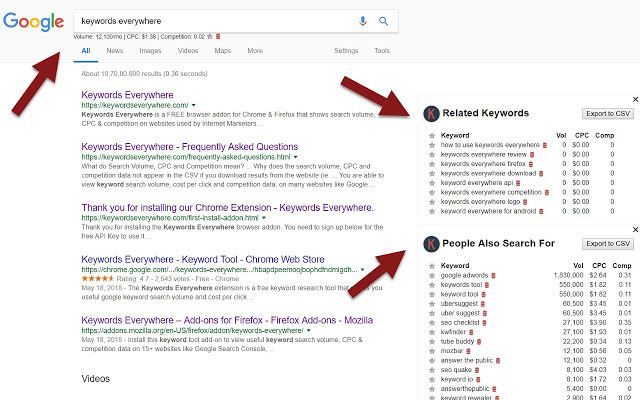
(Source: Keywords Everywhere)
Now place these topics on a content calendar, and start writing.
Ads
For paid advertising, the first step is to choose your platform. It’s up to you whether it’s Facebook or another social media/PPC platform.
The basics remain the same. Create several ads to test against one another to determine which ones are better for which sales funnel stages. Once you’ve found a few that work, scale them up and check the effect on conversions/sign-ups. Then rinse and repeat.
Different platforms have different rules. So make sure to research what’s working on your chosen platform and take it from there.
Before you start testing front-end ads, it’s wise to complete the rest of your funnel…
3. Develop Your Nurture Sequence
Is your product or service high-end? Then you’re likely to need a longer nurture campaign in your sales funnel.
Are you more affordable? Make it shorter.
Your customer’s lifetime value will impact most of what you do throughout your funnel, but we’ll take a look at that in the next section.
Your nurture campaign can now contain anywhere from 5 to 30 emails. After 30 emails, it’s really more of a newsletter, right?
Figure out what you need to do to earn your lead’s trust, and do that. Two proven ways to build trust are testimonials and case studies. As long as you successfully connect with your prospect on a human level, your nurture campaign is a success.
At this point, you’ll also want to choose email management software if you don’t have one already. Good places to start are Mailchimp and Klaviyo. If you wish to try other email marketing tools, you can look at some of the top Mailchimp alternatives.
4. Close The Sale
You’ll have 2-5 email sequences and a sales page at this part of your sales funnel stages. Once your prospect has agreed to move forward, send them over the sales contract. There are plenty of detailed free proposals and contract templates online if you don’t already have one.
5. Track Your Results
No sales funnel would be complete—or even useful—without something to measure the success of the sales funnel stages. It would be like driving a car without a fuel gauge. You’ll only know there’s a problem after it’s too late.
We’ll get deeper into what to track in a second. But here’s how to track your sales funnel.
Most CRMs internally track sales funnel success. However, you could add Google Analytics to your stack if you want to take things further. It’s an invaluable tool with hosts of insights, and you can track it across platforms. So you can keep an eye on your overall funnel health.
Some CRMs fall short in this department. Establish whether your CRM does as well as Google regarding analytics, and take the appropriate steps.
6. Test Your Sales Funnel
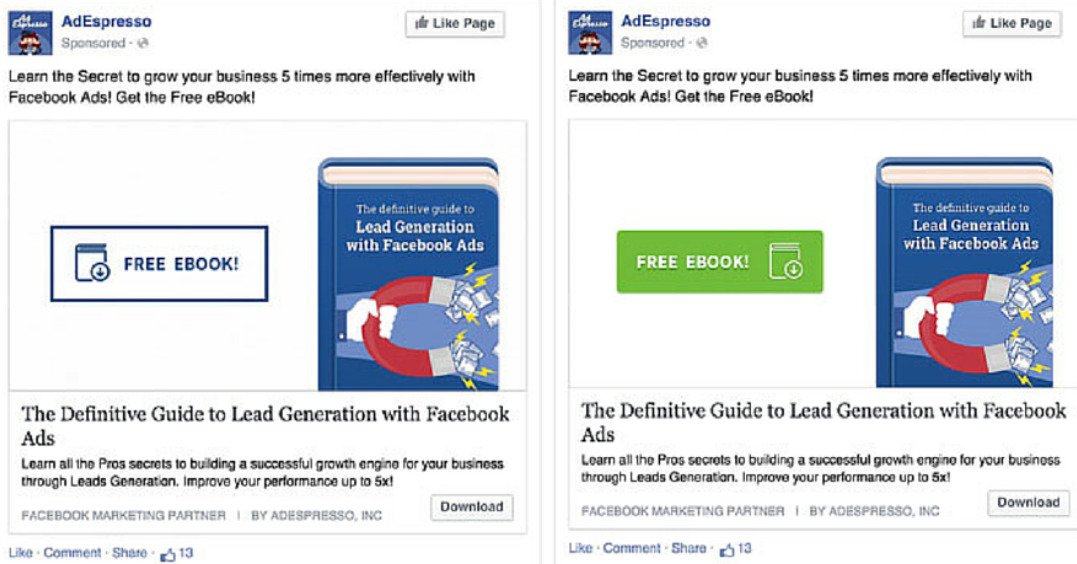
(Source: MarketersMEDIA)
While building and implementing your sales funnel, it’s vital that you run constant tests.
Once everything is up and running, you’ll build a control group – against which you can test all future tweaks to your sales funnel. Then it’s time to check the results and see where the weakest performance is. Whether the drop-off of leads is just after the lead magnet or somewhere in the middle, you’ll know where to focus.
Create new materials, test them against the controls, and keep improving that sales funnel.
Eventually, your funnel will run like a finely tuned money machine. And even then, some continued testing is always a good idea.
How are Sales Funnels Measured? Sales Funnel Metrics That Matter
Your sales funnel has 4 very important metrics to keep an eye on. Namely:
- Leads Entered
- Conversion Rate
- Customer Value & Conversion Cost
- Cycle Time
Getting accurate figures for each of these methods will create predictable forecasting. In turn, this tactic helps determine when it’s crunchtime and when it’s okay to focus on less valuable—but equally important—endeavors.
But how do we measure each metric? And how do we connect the dots? Let’s take a look.
1. Leads Entered
Arguably, this metric covers the most important metric in your sales funnel. If you don’t have leads, the best salesmanship in the world is useless.
The total number of leads is measured when you enter them into your sales funnel—according to the category (types of leads). Here’s an example:

This metric will tell you how healthy your top-of-funnel is. Your focus needs to be here if you’re not getting enough leads.
2. Conversion Rate
Essentially, your conversion rates plus your leads entered equals your sales. And it’s simple to measure. Take your conversions, divide them by your leads, and multiply them by 100.
In this example, let’s say we raked in 170 new customers in the same period the above leads entered.
So 170 / 2,946 x 100 = 5.77%.
However, this tactic is ridiculously simple. Remember to consider leads that have completed the sales funnel for an accurate conversion rate, or you’ll get skewed results.
And finally, remember that end-of-funnel conversions aren’t the only conversions that should be measured.
If you have a multi-step qualification process, it’s important to note how many leads move on to each new stage. This way, you’ll know where your focus needs to be. An example:

So here, we see that Stage 2 is a problem since it has the sharpest drop-off in leads. But the end-of-funnel conversions are excellent. So it’s worth focusing on this stage to determine if:
- The leads are dropping off because of poor copy or sales tactics.
- Unqualified leads are being removed from the sales funnel (possibly to be downsold).
Based on the results, we’ll determine a path forward.
But enough about conversions.
3. Customer Value & Conversion Cost
These two important metrics are squished together—because they go hand-in-hand. They’re used to calculate profits, which is what we work for, right?
Customer value is easy for once-off purchases. Simply attach the value of the product to the customer. Your business can get more complicated with more moving parts, such as manufacturing and staff costs.
But let the accountants worry about these details and focus on sales.
Say you’re selling a software service. And you charge $250 per month. Initially, a customer is worth $250.
Next, we want to determine how long a customer usually stays with us. Let’s say the average amount is 8 months. (By the way, that length of time is too short, so we should look for the cause of the problem!) We could work it out as 8 x 250. But if things suddenly change for the worse, we’ll need to redo all our calculations.
So let’s look at 6 months. It’s better to lowball than overestimate, I always say.
So 6 x 250 = $1500. That’s our Customers Lifetime Value. That’s great and all, but pretty useless to us on its own.
Conversion Cost
Pretty self-explanatory. What does it cost us to drive a lead through our sales funnel and get the sale?
Let’s look at a table:
Before we continue, here’s how I got these figures:
Cost Per Lead = (Cost + Funnel Maintenance Cost) / Leads
Cost Per Conversion = (Cost + Funnel Maintenance Cost) / Conversions
Profit = (Customer Lifetime Value – Cost Per Conversion) x Conversions
Let’s think about a couple of sales funnel examples. Say we’re paying a small sales team $4,000 monthly to manage our sales funnel. We can equally split these costs between avenues. Or split them according to the percentage of conversions. It’s up to you.
Anyway, we can see that we’re making huge profits on our funnel through both entry points. The website is making a more raw profit, but it’s harder to scale than social media ads.
Then there’s a final metric to take into the calculation: the initial sales funnel cost. Let’s say we get a good copywriter to set the funnel up for $20,000. According to the chart above, we made a huge ROI this quarter.
ROI = Profit / Initial Cost
So we’ve made an ROI of 19 already. Nice.
4. Cycle Time
This metric is important for forecasting. How long does it take from when a lead finds your landing page until they purchase your service?
Let’s say it takes 30 days. In that case, you can make accurate monthly forecasts.

This outcome creates simple forecasting, and as you can see, you’re looking good next month.
5 Real Examples of Sales Funnels
One of the best things about sales and marketing is that we get to learn from others. And sales funnels are no exception.
So here are 5 excellent examples of sales funnels that teach valuable lessons:
1. Crazy Egg
Who better to learn from than sales and marketing legend Neil Patel?
Crazy Egg has a great funnel that drives customers through the buying journey. And it all starts with the blog.
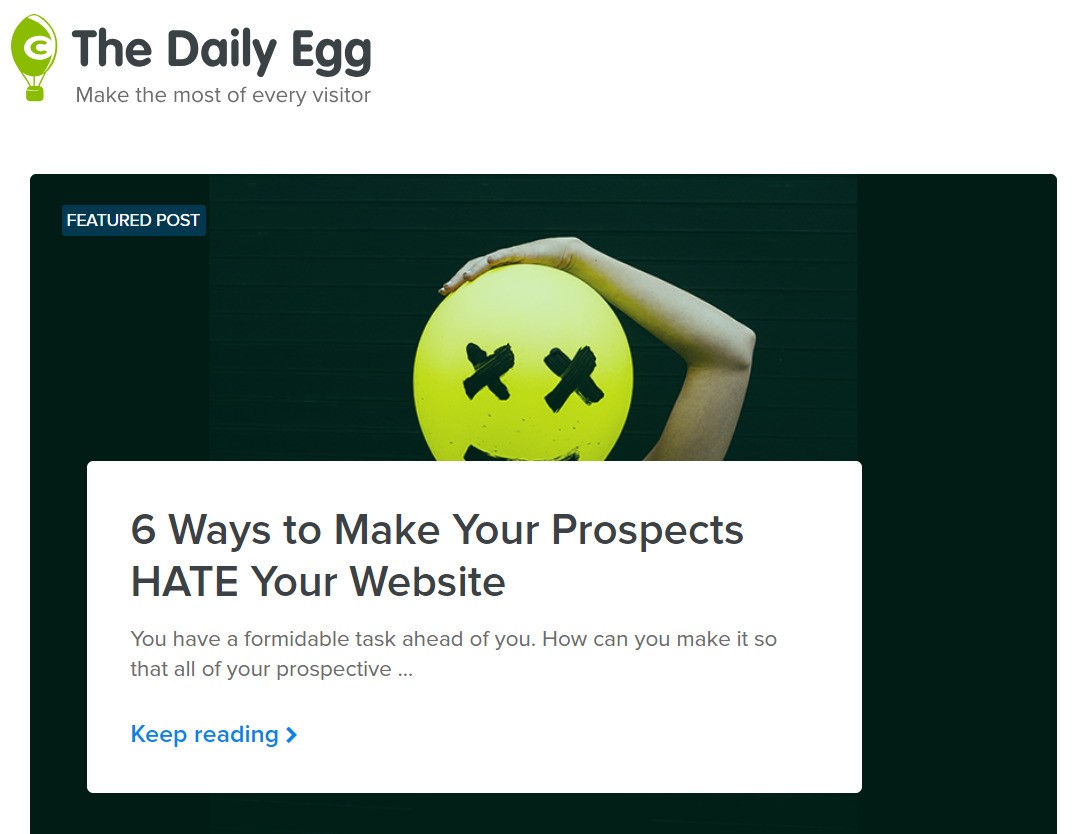
As pictured above, each blog post has a juicy headline. And it contains valuable insights that keep readers coming back for more. Which gets them to sign up— with a good CTA at the bottom of each post:

And just like that, you enter a powerful nurture campaign: a Crazy Egg subscription.
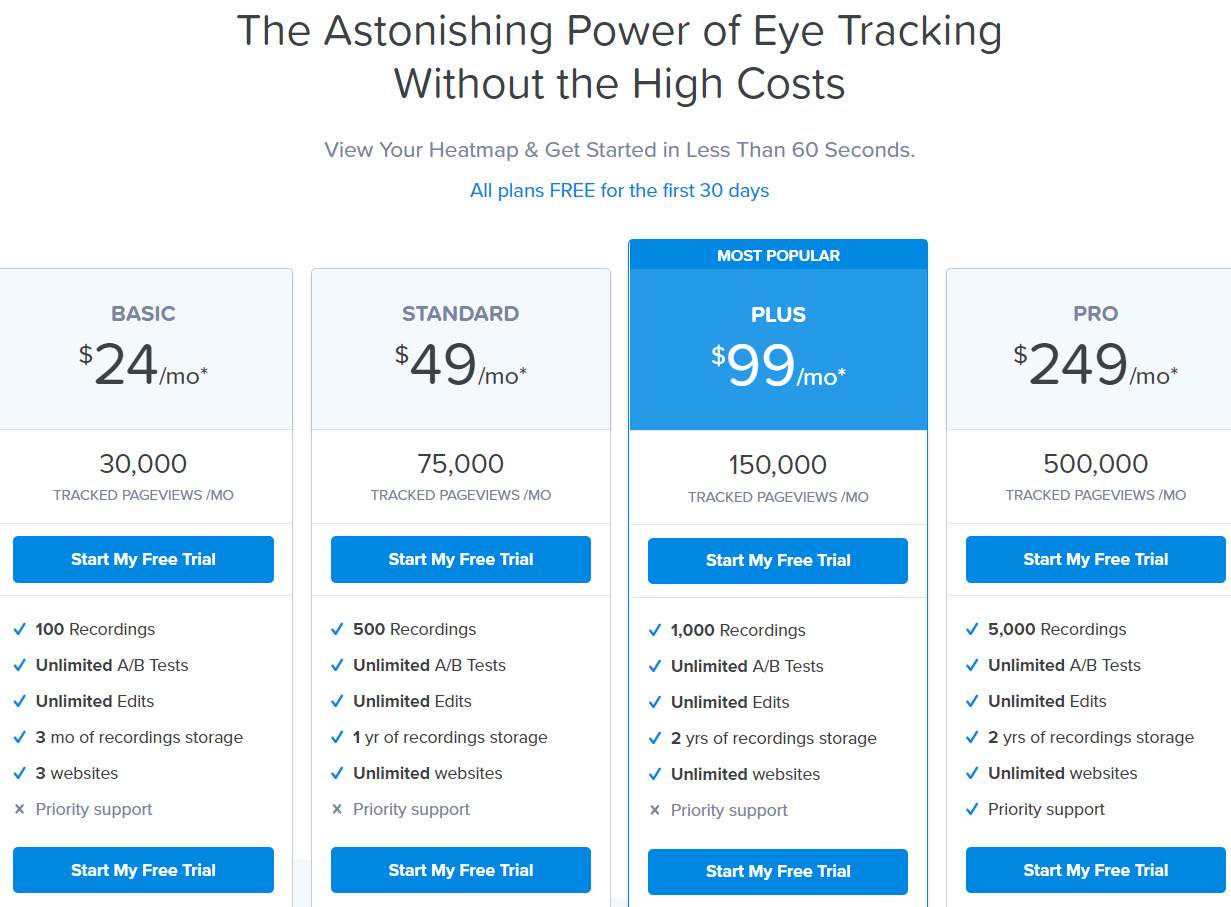
What’s Good about This Sales Funnel?
Honestly, everything. But this funnel really shines in its simplicity.
Everything is clear and as easy to understand as possible. It makes it a perfect example for your own funnel. With every piece of copy, the value proposition shines through. And while the homepage is basically just a signup form at first, it gives you the option to learn more before you subscribe—which is a much better option than a signup page on its own.
How Could This Sales Funnel Be Improved?
In Crazy Egg’s funnel, finding something to improve upon is hard. One really has to nitpick to find something to criticize.
Here’s the thing: Crazy Egg has been growing its revenue every year. And the funnel hasn’t changed much since it first launched, proving it’s working.
But if one thing could be slightly tweaked, it could be a tad more descriptive throughout the funnel.
2. Harvest
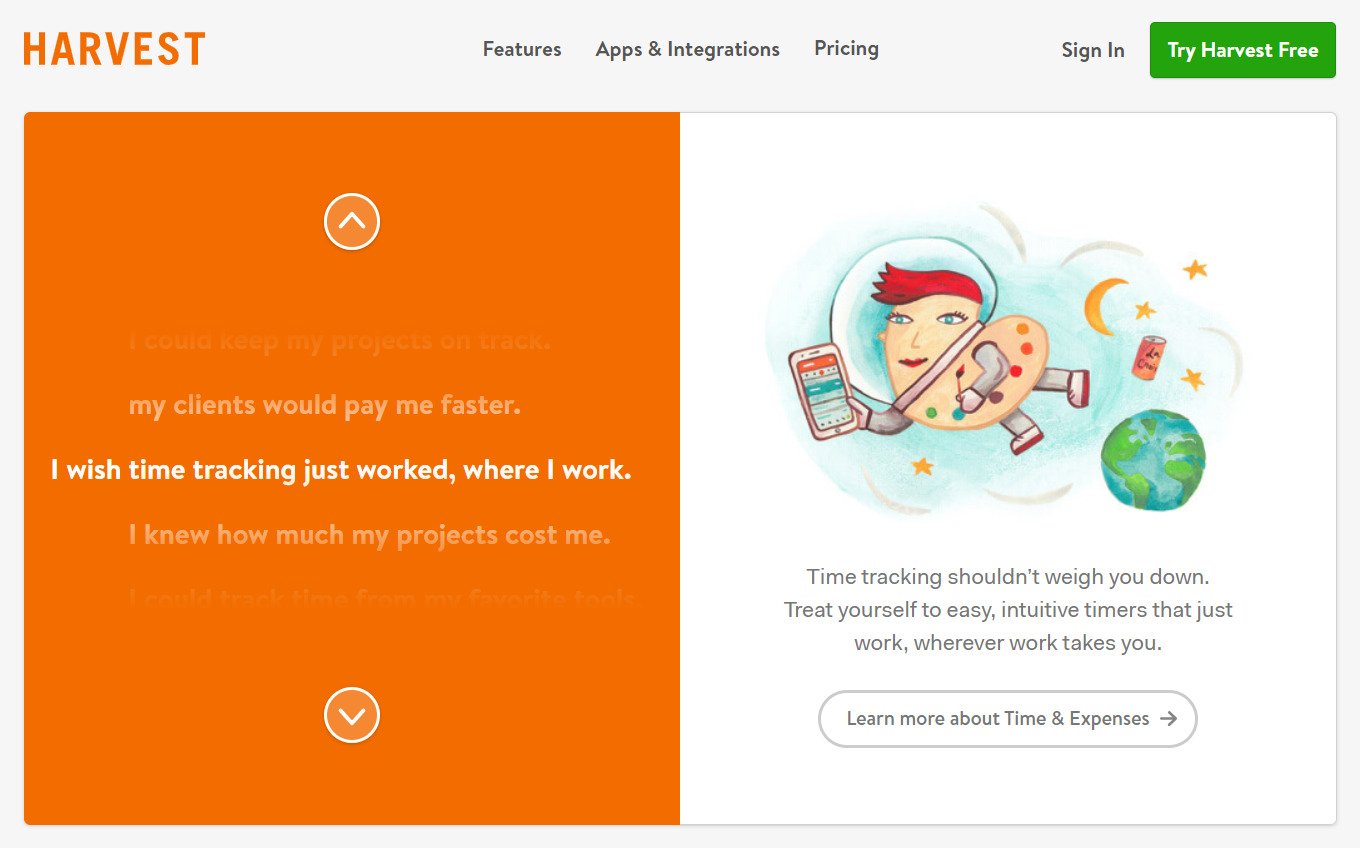
Harvest is time-tracking software that’s mainly built for companies that use freelancers. But many in-house teams have adopted similar software.
Regardless, Harvest makes use of organic traffic to speed up growth.

Their blog is regularly updated, which is indicative of its effectiveness. And again, there’s a clear CTA to join their mailing list at the bottom of each page.
What’s Good about This Sales Funnel?
Harvest has a clear value proposition visible in all their copies. Right from the start, it’s easy to understand what Harvest offers you.
Personally, I haven’t seen their emails. But judging from the quality of their top-of-funnel copy, the emails are top-quality.
How Could This Sales Funnel Be Improved?
The CTA at the bottom of the blog posts could be more benefit-orientated.
Currently, they have 2 CTAs at the bottom of their page:

Both point toward takeaways that aren’t very beneficial to users. The question in each reader’s mind is: “What’s in it for me?” So hitting them with more personal, powerful, beneficial CTAs goes a long way toward increasing leads that enter the funnel.
It’s impressive that 50k businesses trust Harvest. But the reader would probably respond better to something like “Get more time out of your day.”
3. Monday.com
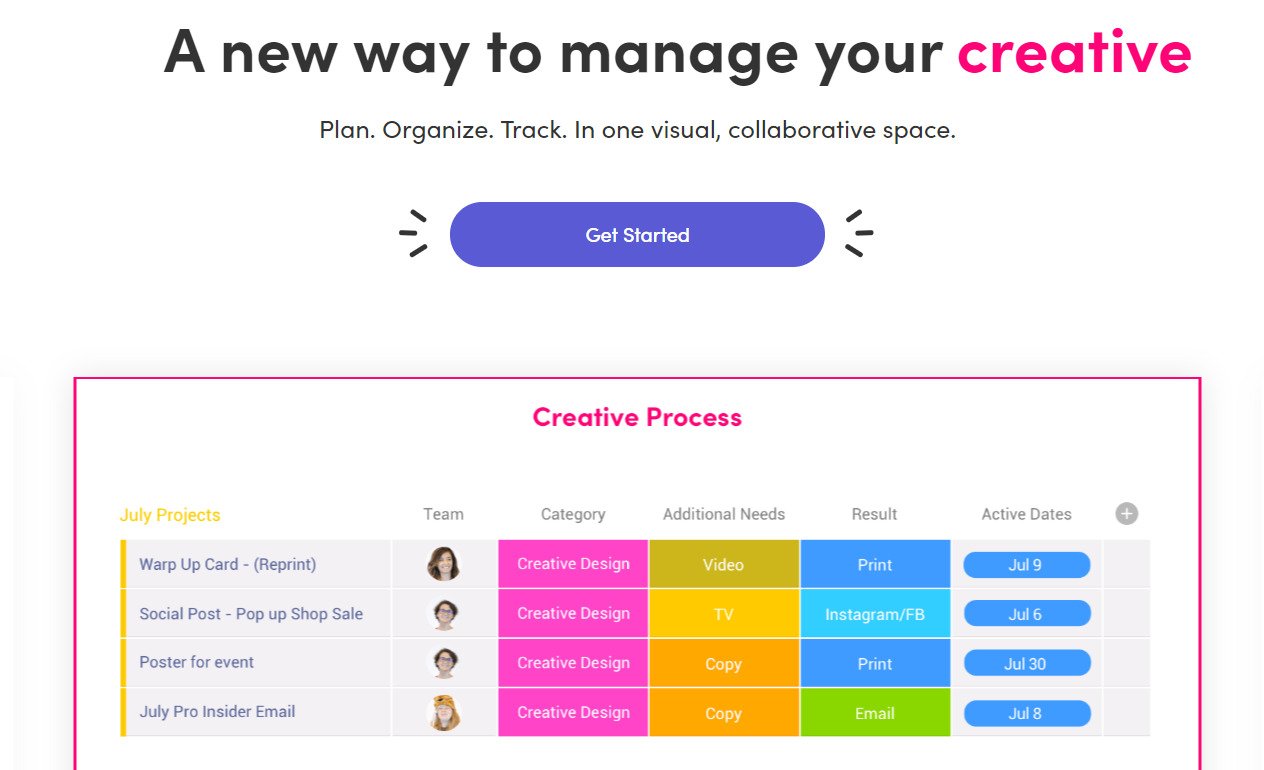
Monday immediately communicates their main benefit: Be more organized. They’ve also been running YouTube ads that definitely drew my attention. The ads were effective, as they mainly focused on social proof.
One ad also pictured satisfying events, such as pointing towards other benefits they offer.
In addition, they have a blog with a CTA that scrolls down the page with you.
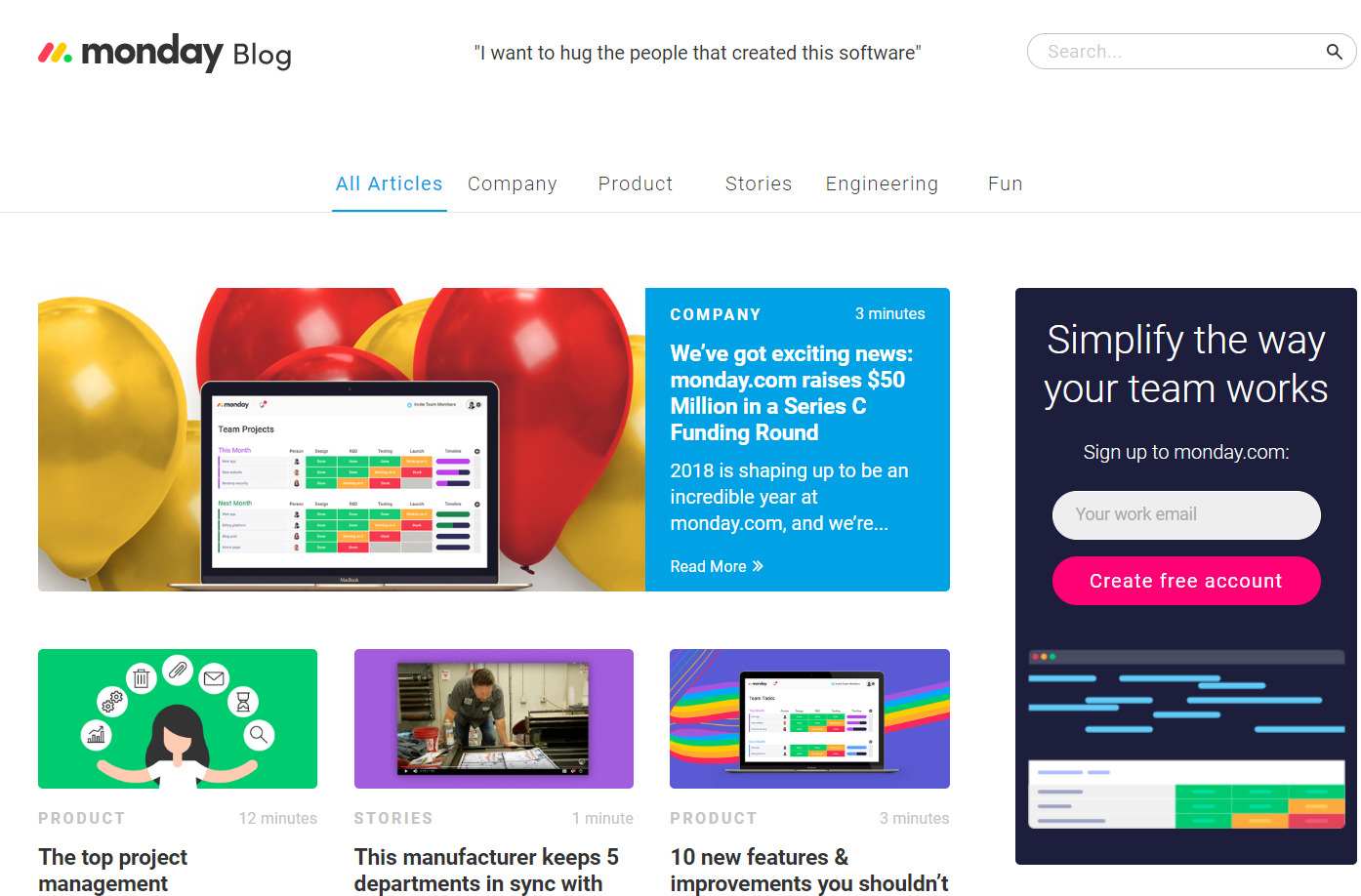
Given the frequency of posting, they’re working very hard to scale the company quickly.
They’re certainly making waves.
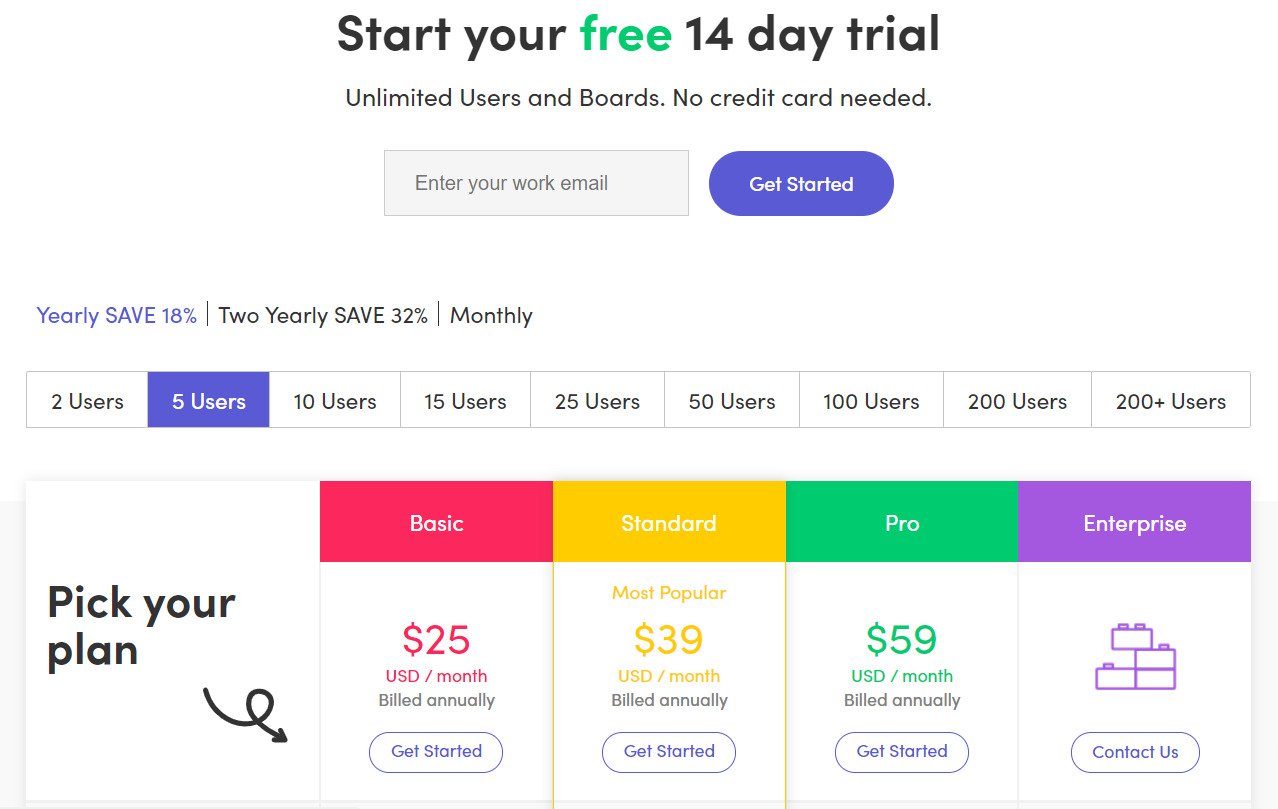
- Reminder to sign up at the end of the free trial
What’s Good about This Sales Funnel?
First, they quickly communicate the chief benefit in their video ads and homepage. Secondly, their frequent blog posts are doing wonders for their SEO score.
Plus, the floating CTA button is a great idea, as it keeps the signup top-of-mind throughout the blog post, although it could be considered distracting. So before we make a final call, let’s wait and see whether they change it.
How Could This Sales Funnel Be Improved?
While the headline on the homepage works well with the subtitle and imagery, it wouldn’t be much use alone. A new way to manage your creativity doesn’t specifically mean a better way.
So it would be worth playing with a few different headlines that focus more on specific benefits to the user.
And there’s that floating CTA button that we’re still undecided on.
4. Basecamp
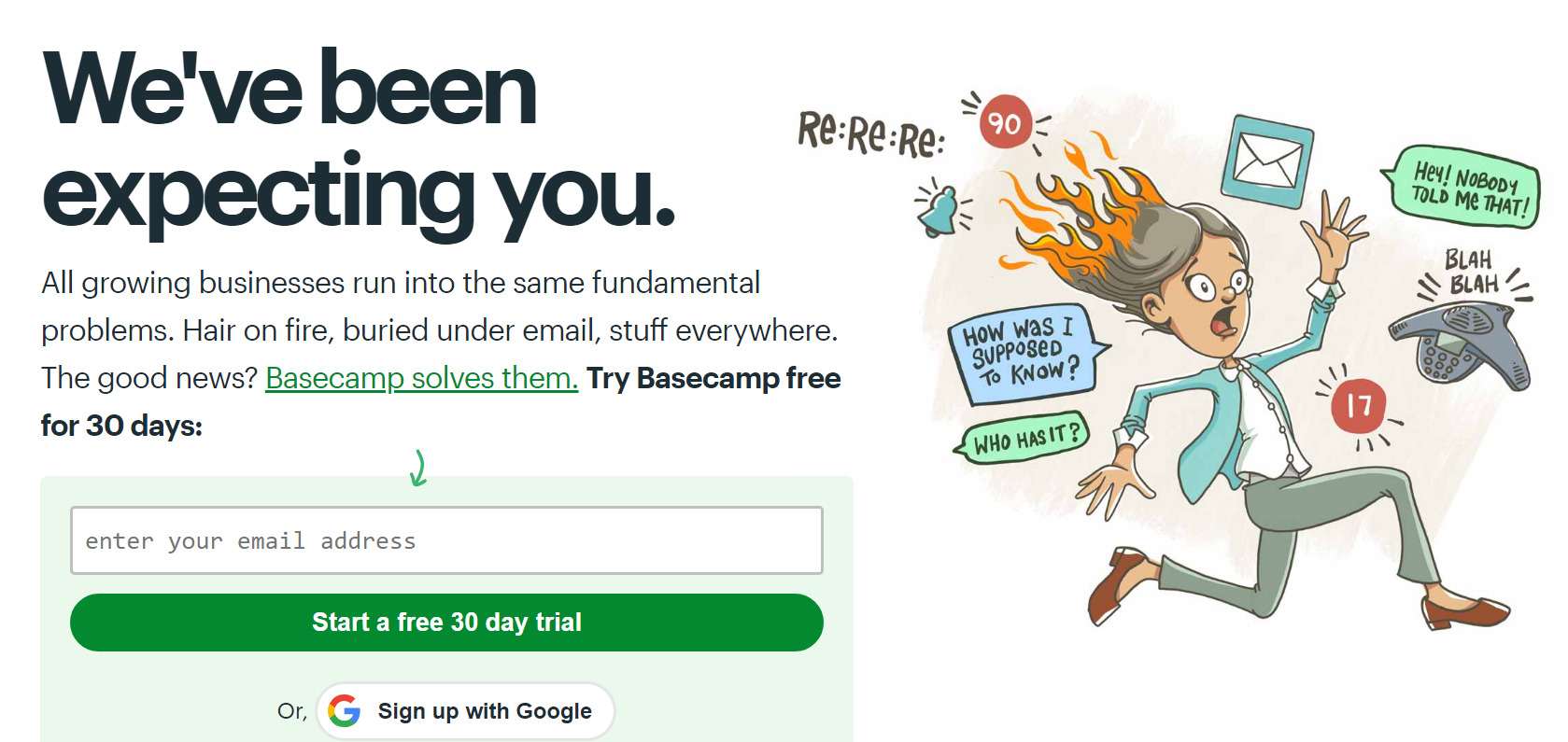
Basecamp is also project management software with a unique copy approach: Good humor.
Okay, businesses commonly attempt to use humor in their ads. But they rarely use it to good effect without destroying the sale.
Basecamp speaks to the problems users are having. While it makes light of the problems, it still draws attention to them. And without hesitation, it points out they can solve these problems.
They also have a traditionally organic funnel. While they run some ads, they also use their blog to get traffic. However, it seems minimal, as some posts don’t even contain a CTA (which can be good).
Notably, their blog has a different brand: Signal v Noise (SVN). This tactic is odd but not unheard of. But their blog is straightforward. No BS.
What’s Good about This Sales Funnel?
Humor is often avoided in a copy. But every so often, a company pulls it off well. And Basecamp is one of these companies.
They have a unique cartoon style for their header image and frequently test different designs on their homepage. But from what I can see, basically, the same image has been featured since 2017.
And it’s easy to see why: It illustrates the problem while giving the user both laughter and inspiration.
How Could This Sales Funnel Be Improved?
SVN is a recognized website. Those backlinks to Basecamp are certainly good for SEO purposes. But if I could change one thing about this funnel, it’d be to also keep a blog on their main website for bonus SEO points.
The headline “We’ve Been Expecting You” also doesn’t do much for me. It fits well with the style of the page. But I’d test a few different, more benefit-orientated headlines here.
5. Planscope.io
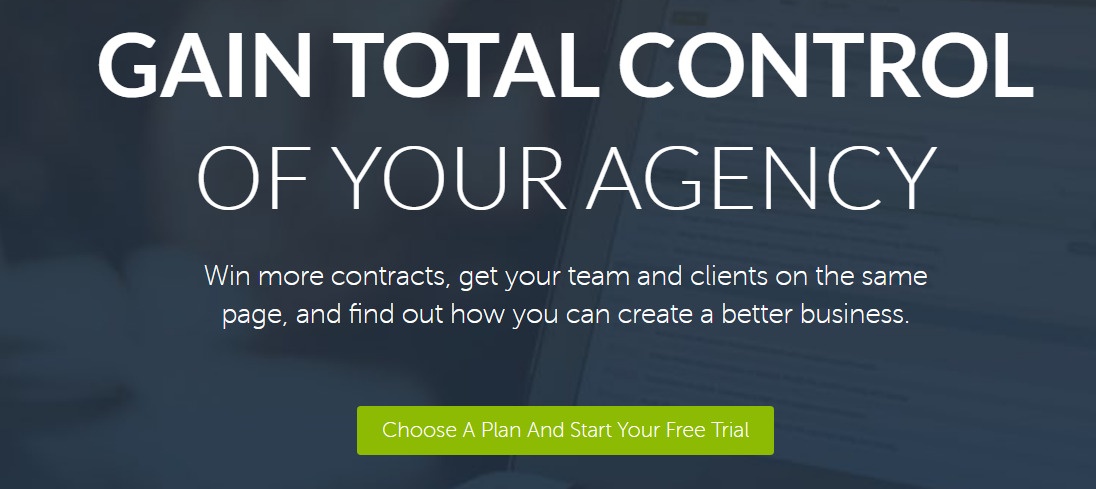
Planscope is another project management software. (What’s with PM software and good copy?)
They also run a blog, keeping users updated on business and software changes.
However, they have several CTAs around the website, all pointing towards a free trial.
What’s Good about This Sales Funnel?
The homepage probably contains one of the best headlines in the list. It’s short and powerful but could be a little more specific.
How Could This Sales Funnel Be Improved?
Undoubtedly, the blog should speak to the readers. They want value and/or entertainment. So just posting updates about the business could quickly bore the readers, and readership will drop, which will cause leads to drop.
Given the current state of the blog, it’s safe to assume that Planescape is operating on ads and/or referrals.
5 Free Online Sales Funnel Templates
The internet covers you if you’re uncomfortable creating your own funnel from scratch. Here are 5 templates that you can build your own funnel around now.
1. AutoGrow’s Ultimate Sales Funnel
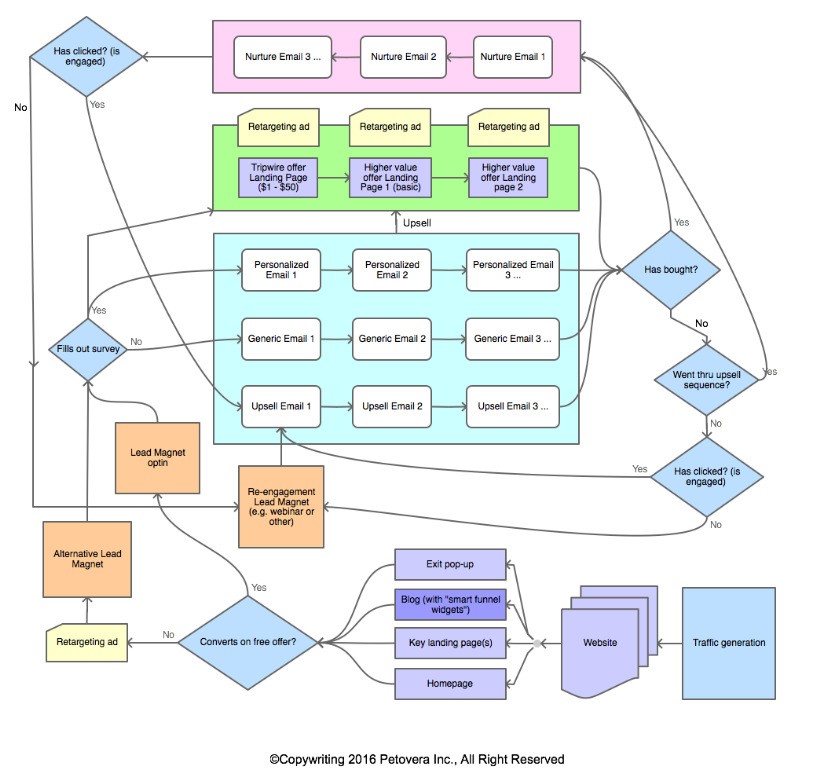
This is a great example of a full sales funnel from Autogrow and Petovera. It’ll help you build out a complete funnel that’ll help convert, retarget, and upsell your leads. You can find more information and download the template here.
2. Clickfunnels’ High-Ticket Clients Funnel

This funnel from Clickfunnels will help you snag high-ticket clients. If you focus on making your product or service affordable, this one wouldn’t be of much use to you. But it can be adapted to any business model.
3. FitSmallBusiness Templates
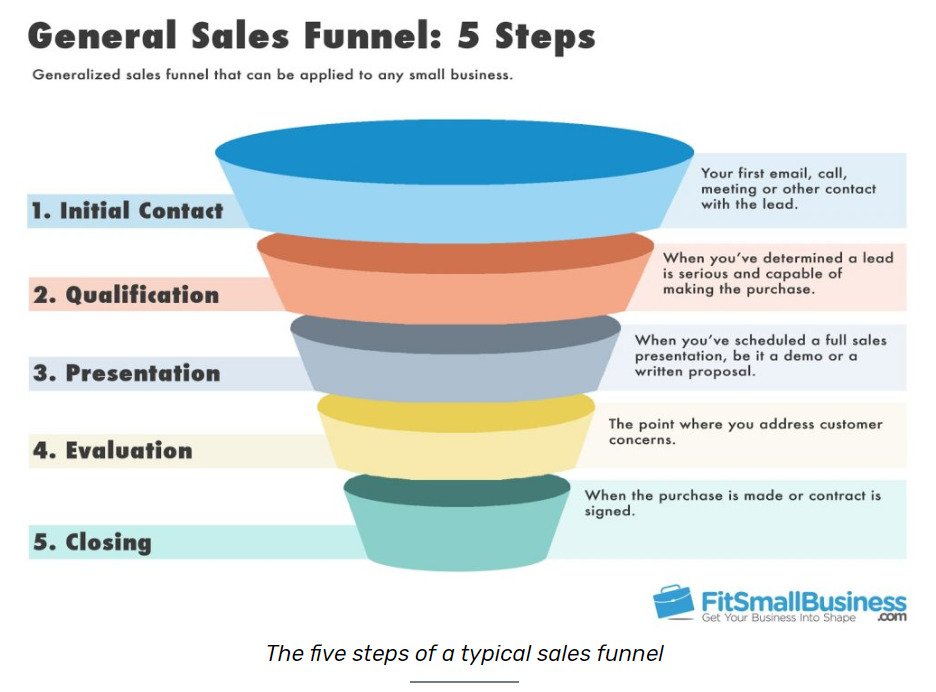
FitSmallBusiness has two funnel templates here. One is a 5-stage funnel (pictured above) and the other is a 7-stage funnel.
Both are great, and each fits different preferences and business models. For example, if you have a simple offering, a 5 stage funnel might be all you need. If not, the 7-stage template could suit you better.
4. Hubspot’s Sales Funnel Template
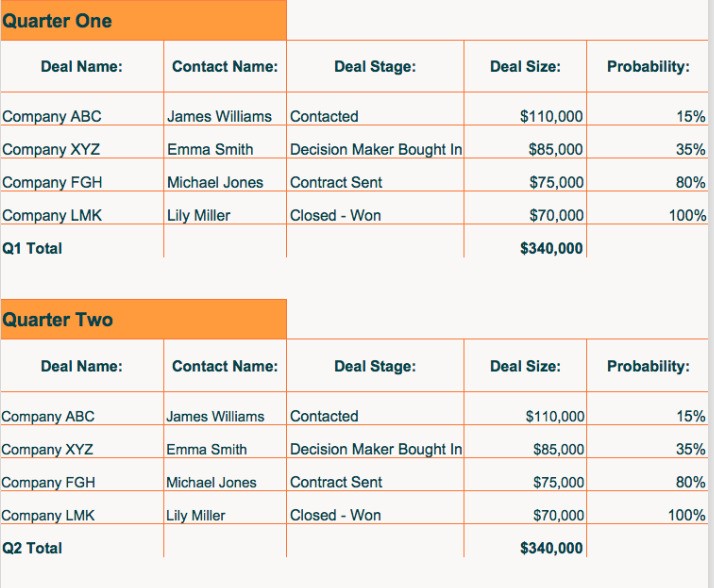
Hubspot has built up a great reputation over the years. So you’d expect top quality from them in all they do.
This sales funnel template of theirs is no different.
5. Clickfunnels’ Free Book and Shipping Funnel
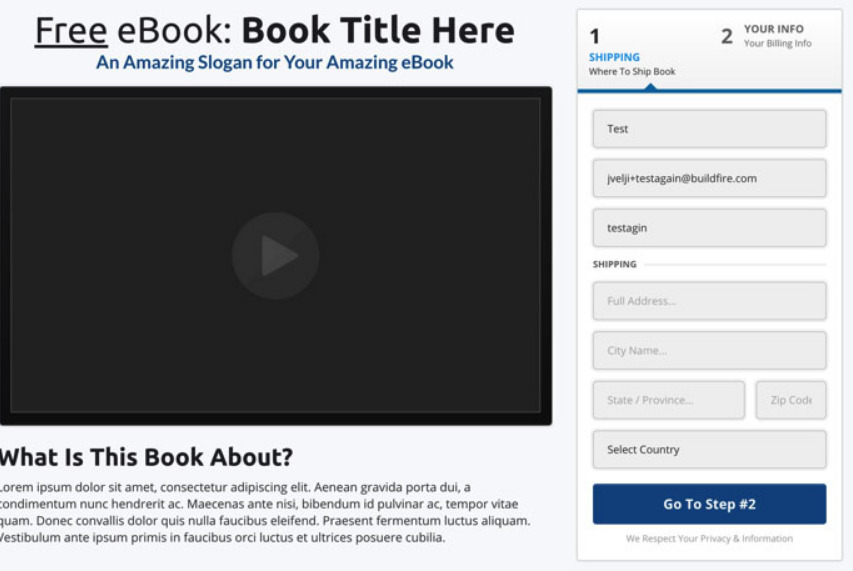
Getting a book out there can stamp your authority on your market. But getting people to buy your book is a different story.
The good news is that this funnel will help you connect readers to your book—at virtually no cost to you. It’s designed to cover shipping, manufacturing, and low-end advertising costs while getting you more authority as an expert and leads.
Try it here.
5 Software Solutions for Sales Funnels
Clickfunnels

Clickfunnels helps you on both ends of your funnel. It offers landing pages, sales pages, and more.
However, your emails should be managed through a different portal.
All the above templates are housed in Clickfunnels, which shows the platform’s power. There are hundreds of templates around Clickfunnels that you can use for anything your business is trying to achieve.
Wishpond
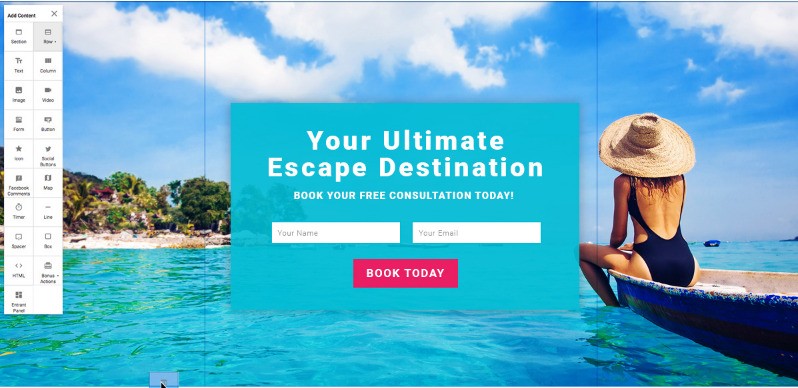
Wishpond helps you throughout your entire funnel—from landing pages to email marketing.
It simplifies the funnel-creation process and gives you a central way to manage all your funnel activities.
HubSpot
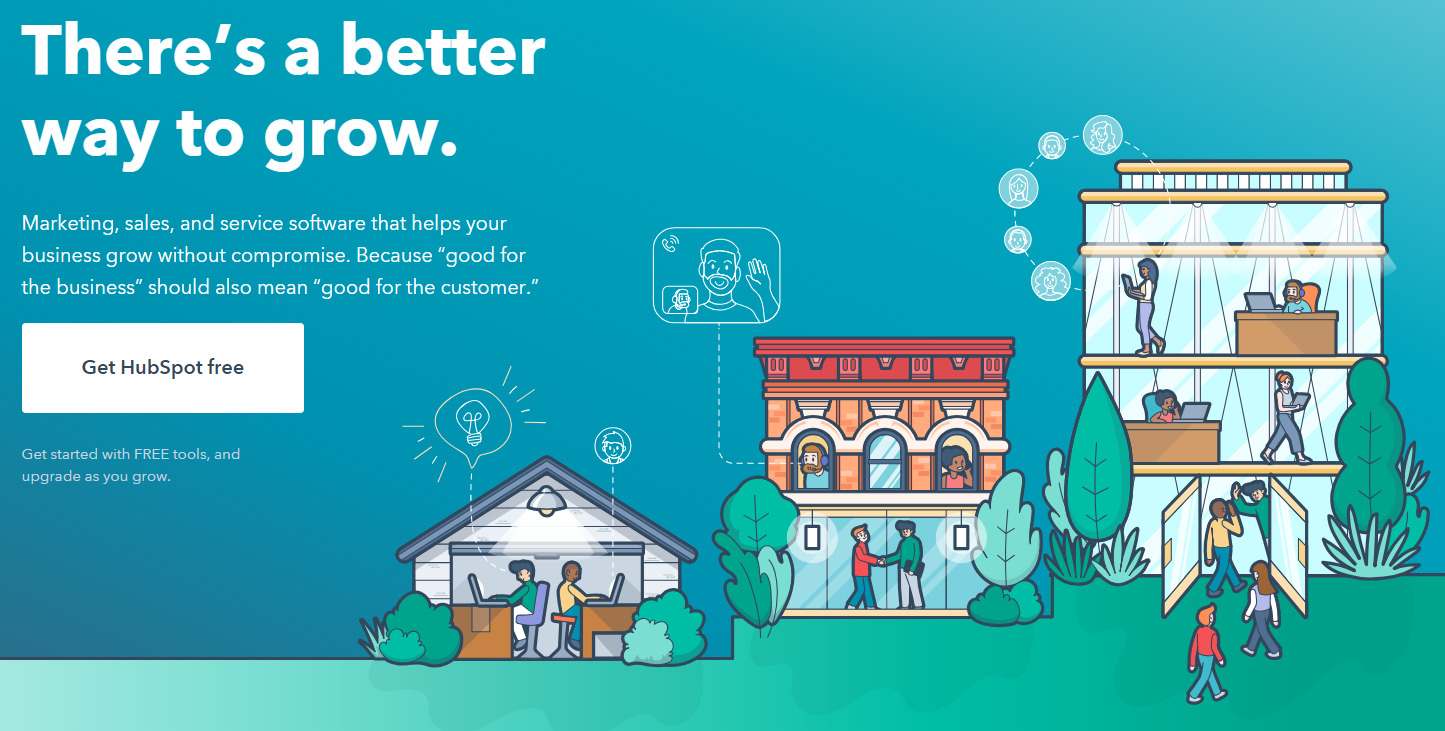
Hubspot also helps you throughout your entire funnel. And there’s a free forever plan too.
But when it comes to premium accounts, Hubspot is one of the more expensive solutions. However, it’s well-suited to the needs of larger businesses.
UpLead
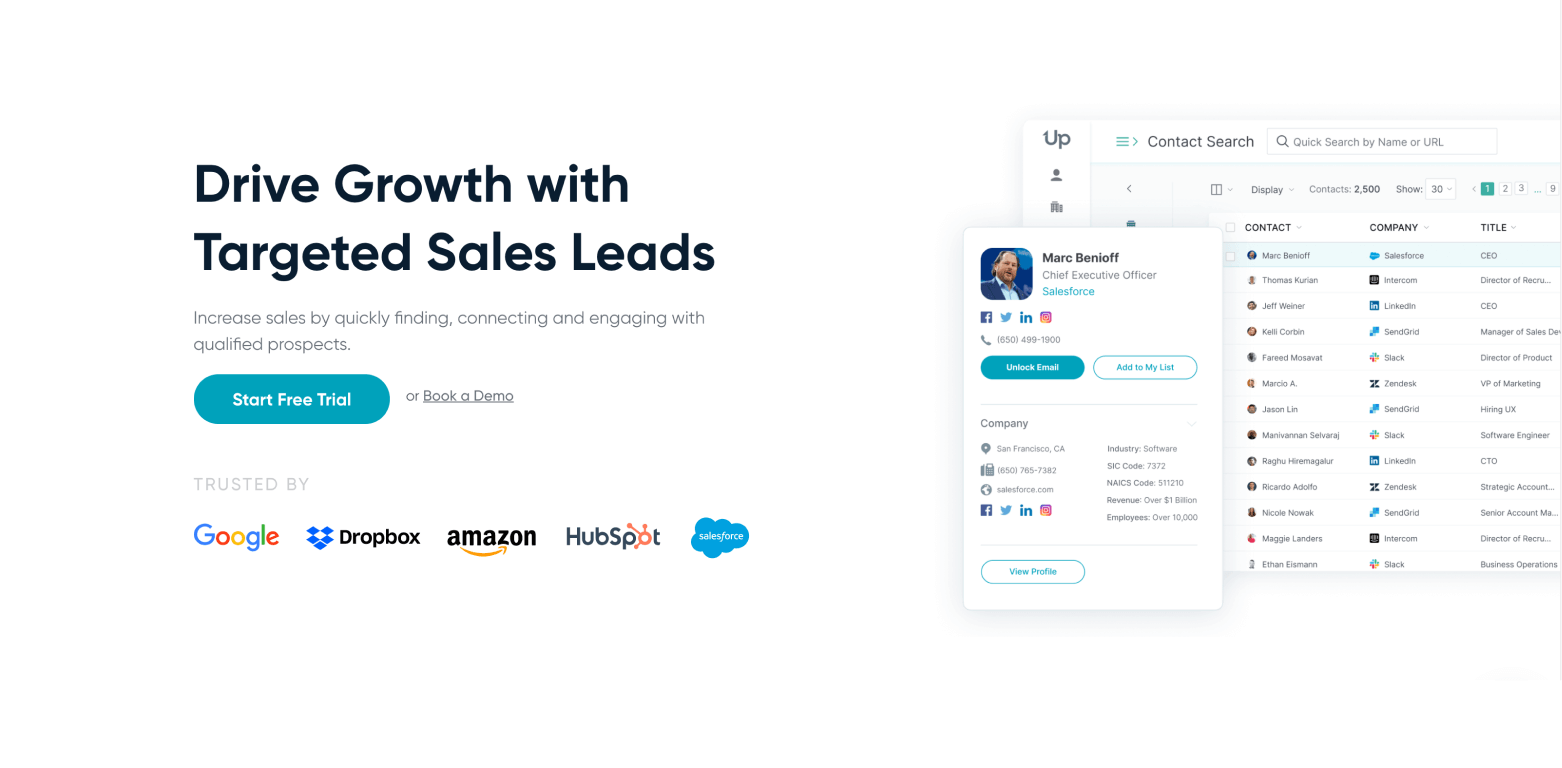
UpLead helps you fill the front end of your funnel. Placing a huge emphasis on quality leads helps keep those conversion rates high and creates loyal customers.
If you don’t have leads, your funnel is useless, which is why a good lead generation platform (such as UpLead) is crucial to your funnel’s success.
Instapage
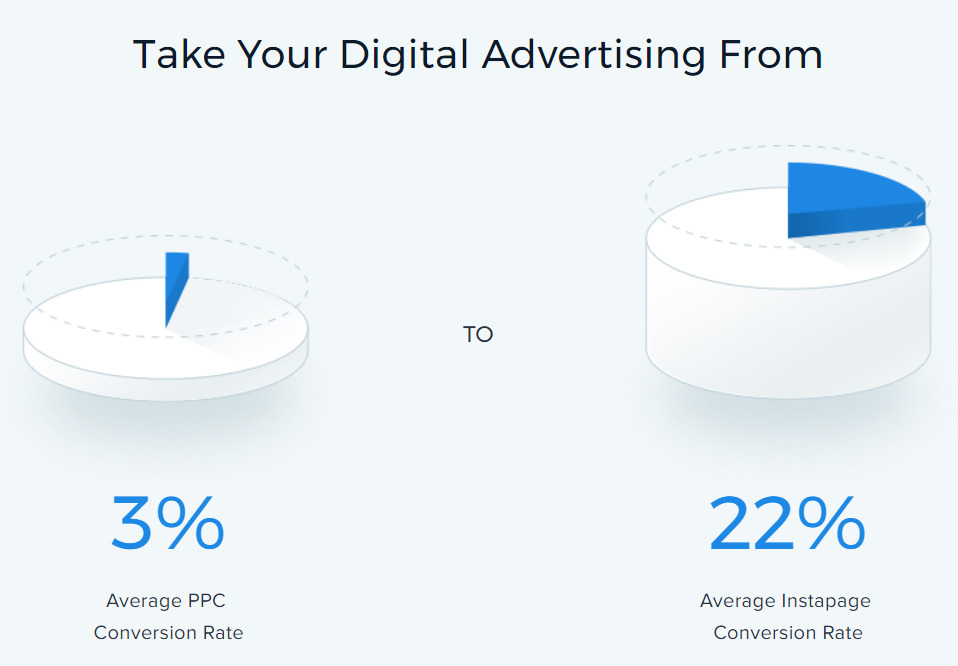
Instapage competes with Clickfunnels by helping you set up your funnel’s web pages.
Instapage has an easy-to-use page builder and a host of other features that’ll help you build the perfect web page.
When it comes to selecting the right page builder for your website, there are many options. But since most offer free trials, it’s best to test them and decide for yourself.
Sales Funnels: Back to You
A solid sales funnel is essential to growing your business. You’ve now learned all the necessary information you need to get started and create one of your own: what a sales funnel is, what the different stages are, how to build one, and what metrics to follow.
Using the templates and tools above will help you optimize your sales funnel and automate and streamline your sales process. The only thing you have left to do now is go out and build your sales funnel! It may take some trial and error, but one thing is certain: you could be losing out on revenue without one.

